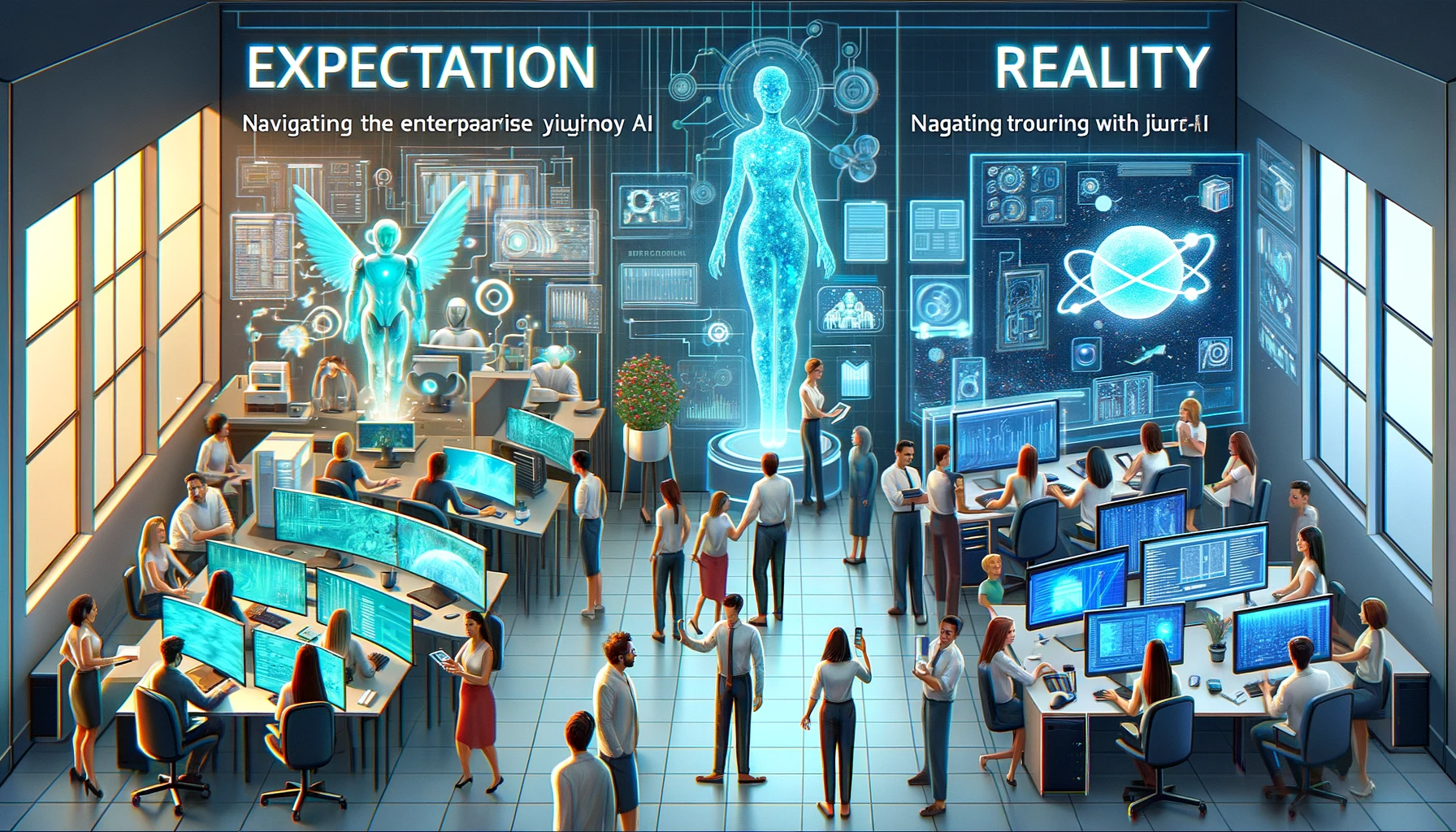In the dazzling world of generative AI, the possibilities seem endless. From automating board reports to revolutionizing sales data analysis, AI platforms like ChatGPT have ignited imaginations across the corporate spectrum. The potential for enhancing efficiency, driving revenue, and sparking innovation is undeniable.Yet, the journey from awe to application in the enterprise realm is not as straightforward as it appears.
Expectations: The AI Dream
Enterprises often approach generative AI with high hopes. The expectation is that these advanced tools can seamlessly integrate into existing workflows, instantly understanding and utilizing company-specific data to provide tailored, insightful outputs. The vision is one of AI systems rapidly learning from new data, generating reports, and offering strategic recommendations with minimal human intervention.
Reality: The Groundwork Behind the Magic
However, the reality is more complex. Implementing generative AI effectively in an enterprise setting is a multifaceted challenge:
-
Data Transformation: AI models require data in formats they can understand. This often means extensive preprocessing to transform enterprise data—be it sales figures, market research, or customer feedback—into a usable format.
-
Model Selection and Configuration: No single AI model fits all purposes. Selecting and configuring the right model for specific enterprise needs is crucial. This involves understanding the strengths, limitations, and requirements of different AI models.
-
In-Context Learning Challenges: Unlike asking a pre-trained model general questions, applying AI to specific enterprise contexts demands further training. This in-context learning requires not just data, but data annotated in ways that align with the enterprise's specific needs and goals for any particular use case.
The Path Forward: Tooling, Planning, and Realistic Expectations
Despite these challenges, the potential of generative AI in enterprise applications is real and attainable. The key lies in a balanced approach:
-
Right Tooling: Platforms like SmartSpace offer the flexibility and security necessary for enterprise AI applications. Their ability to integrate different AI models and manage data across multiple workspaces is critical.
-
Thoughtful Planning: Successful AI implementation begins with strategic planning. This includes clear objectives, understanding the data requirements, and aligning AI capabilities with business goals.
-
Setting Realistic Expectations: It's vital for enterprises to approach AI with a realistic understanding of its capabilities and limitations. AI is a powerful tool, but it's not a silver bullet. It requires careful integration into human-driven processes.
Conclusion: AI as a Partner in Enterprise Innovation
Generative AI holds immense promise for the enterprise sector. However, realizing this promise requires a blend of the right tools, strategic planning, and realistic expectations. With these elements in place, enterprises can harness AI not as a magical solution, but as a powerful partner in their ongoing journey of innovation and growth.
